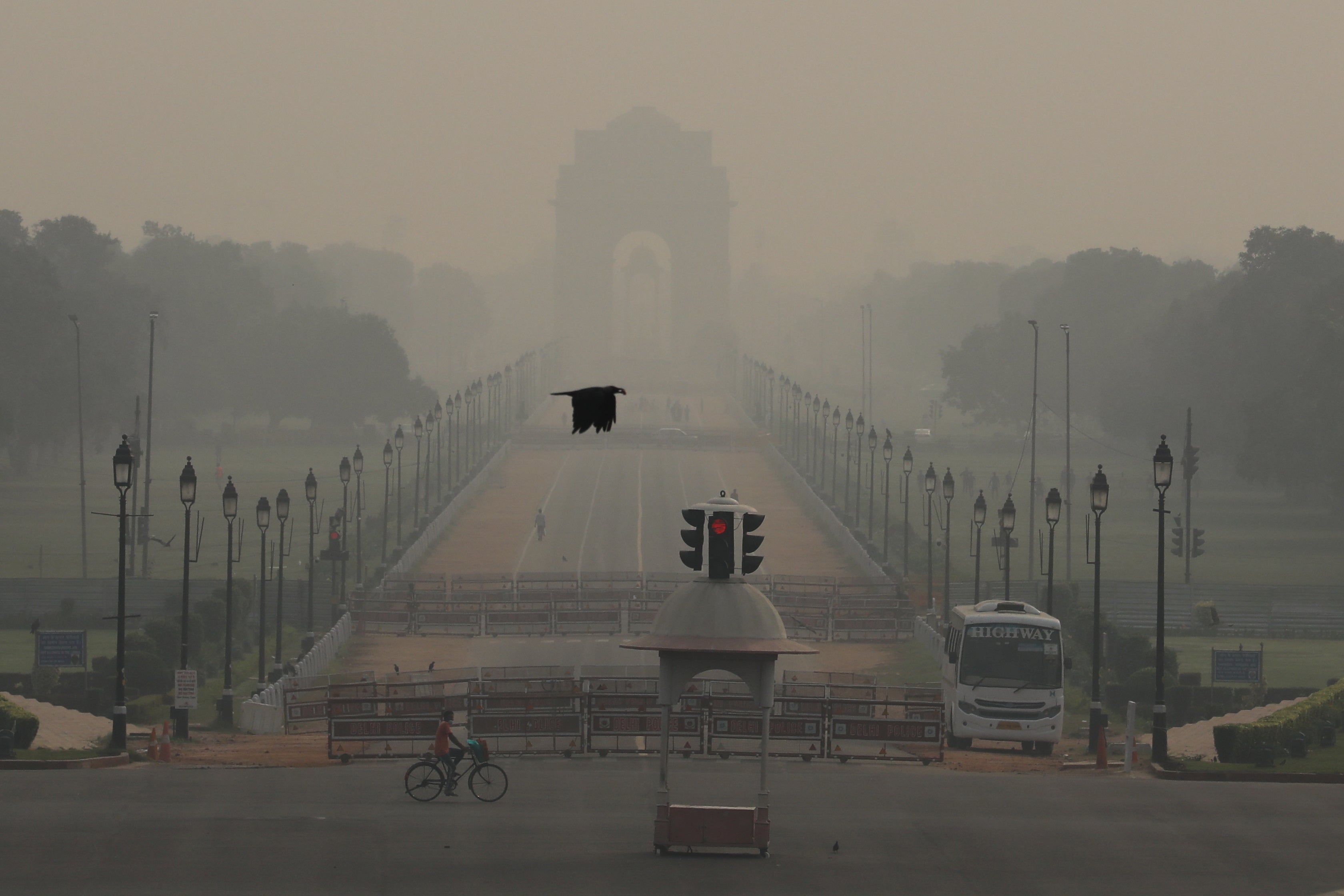Delhi smog: What it’s like to live with the most polluted air in the world
Winter in an Indian metropolis isn’t pleasant for anyone these days – but for the poorest, air pollution has become a devastating and deadly health risk, as Adam Withnall in Delhi reports


Living in the Indian capital, Delhi, there is scarcely an issue that more clearly highlights the divide between the rich and poor than air pollution.
Each year, the smog descends upon the city, arriving in October as the fierce summer heat subsides, and with it the depressing realisation that there won’t be another clear blue sky until around late March.
The winter in Delhi is pleasant for no one: sleep with a window slightly ajar, and you’ll wake up to a scratchy throat, sore eyes and the stench of the smog entering your room in the morning.
Outdoor sports become impossible, given the constant sense that the health benefits of exercise can never make up for the impact the pollution is having on your lungs.
In this period, those who can afford to do so retreat into protective cocoons of clean air, with whole institutions like international schools and government departments deploying industrial-scale air purifiers across their campuses.
The Modi government hasn’t released data on the amount it spends on purifiers for the prime minister’s office and other ministries since a furore in 2018 when it was revealed to have splashed 3.6 million rupees (£37,500) on acquiring 140 of them.
When they do have to step outside, wealthy Delhiites won’t leave home in this period without an N95 pollution mask – habits which had hardly been given up by late March this year, when they made the transition to coronavirus lockdown a lot easier.
And when the smog gets too much, those who have the money leave the city in droves, fleeing the smoggy plains of north India for other, more bearable cities, or the Himalayan foothills, where the AQI (air quality index – something every Delhiite checks each day) is comparatively improved.
However, for the vast majority of the population in Delhi and other Indian metropolises, there is no escape or respite from the toxic smog. Most daily-wage labourers have no choice but to work outside, exposed to the air pollution all day, and in the evenings the problem is exacerbated as temperatures start to drop and they use solid-fuel fires to stay warm.
It is no surprise to see figures released on Wednesday by the Health Effects Institute that rank India as having the most polluted air in the world.
The State of Global Air 2020 report states that air pollution kills more than 116,000 infants a year in this country – part of the first comprehensive analysis of the impact of air pollution on newborns globally.
These dying babies will not be from wealthy families in Delhi – and the report’s global figures show that overwhelmingly it is poorer countries that are experiencing the worst impacts of air pollution today.
According to the report, south Asia and sub-Saharan Africa account for 422,000 of the nearly half a million babies being killed by air pollution each year globally.
In India, the arrival of the smog season is likely to compound the public-health impacts of a still rampaging coronavirus outbreak. The country added another 55,000 new infections in the past 24 hours, taking its total cases well over 7.6 million.
Doctors I have spoken to here say a winter second wave of hospitalisations is all but inevitable – given that Covid-19 primarily presents as a respiratory illness, combined with the toll the smog takes on people’s lungs.
What’s most frustrating for us living in Delhi is that the solutions to the capital’s smog problems, experts generally agree, are well known and practicable. They include improving emissions standards of vehicles, the enforcement of existing standards for big industries, and the prevention of crop burning – again, already a fineable offence – in neighbouring agrarian states.
Yet year after year, the debate around Delhi’s pollution crisis ends up dissolving into a political blame game, with the central government blaming the Delhi government, and Delhi blaming its neighbours.
Activism and outrage in the fight for the right to breathe clean air remains a very niche pursuit, with protests last winter drawing relatively small numbers and still less media interest. And until that changes, politicians will have no electoral incentive to take the necessary steps to solve the problem – and 116,000 babies will have died for nothing.
Join our commenting forum
Join thought-provoking conversations, follow other Independent readers and see their replies
Comments


Bookmark popover
Removed from bookmarks